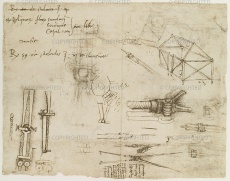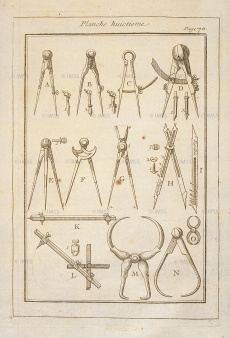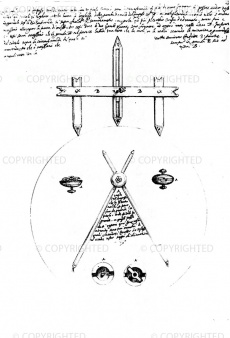Reduction Compasses
From Inventions
Name currently used for the compass with intersecting legs, or four-point compasses.
Contents |
Historic Period
1st C. B.C.?
Description
Instrument used exclusively to reproduce drawings in reduced or enlarged scale, having two legs intersecting at a fixed or mobile centre whose opposed points form simple ratios of 1:2, 1:3 or other (Vocabolario della Crusca, 1878). The most ancient was found in the archaeological excavations of Pompeii. In the Renaissance it was known as double compasses, compasso a centro mobile (compass with mobile centre) (Giacomo Contarini) or compasso con le punte doppie (compass with double points) (Muzio Oddi, Fabbrica et uso del compasso polimetro, Milan 1633, Introduction), while in modern terminology it is also called four-point compasses.
Bibliographical Resources
Contarini, Giacomo. Figure d'Istromenti Matematici e loro uso, ms, ca. 1590, Oxford, Bodleian Library, Ms. Canon. Ital. 145, c. 21.
Oddi, Muzio. Fabbrica et uso del compasso polimetro, Milano 1633.
Existing Instruments
- Museo Galileo, Istituto e museo di storia della scienza, Firenze
Florence, Museo Galileo. Institute and Museum of the History of Science, Inv. 3686.
Florence, Museo Galileo. Institute and Museum of the History of Science, Inv. 655.
Florence, Museo Galileo. Institute and Museum of the History of Science, Inv. 633.
- Musée des arts et métiers, Paris
Paris, Musée des arts et metiers, inv. 02755-0000-
Paris, Musée des arts et metiers, inv. 08851-0000-
Paris, Musée des arts et metiers, inv. 02773-0000-
Napoli, Museo Archeologico Nazionale, Inv. 76684
Links (External)
http://www.informaworld.com/smpp/content~db=all~content=a756424205~frm=titlelink (English)
Images
Author of the entry: Filippo Camerota



